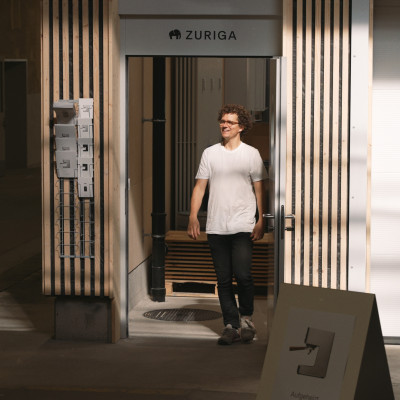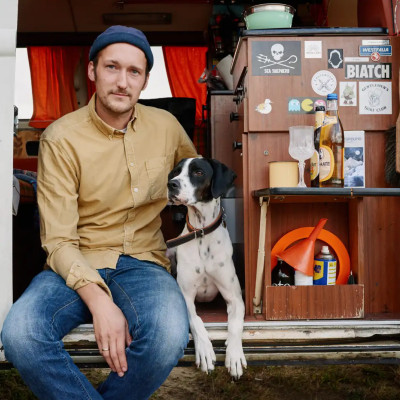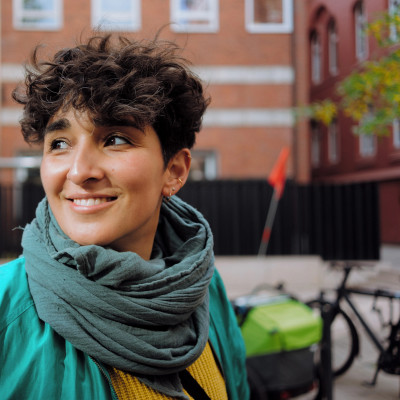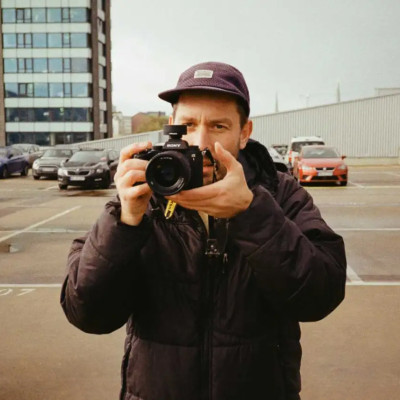We don’t want an SUV cargo bike
muli turns five years old. The first compact cargo bike undergoes a brand makeover. A conversation about attitude, apprenticeships and the city of the future with product designer and Managing Director Sören Gerhardt.

For 20 years, bicycles were simply bicycles: wheels, saddle, brakes, chain - when and why did that change?
There are social changes that have made a different lifestyle more plausible again. More and more people are living in cities, life is taking place in smaller spaces and distances are getting shorter. I myself moved to the city as a student with a girlfriend and child and it quickly became clear that driving a car is not a good everyday solution. Too big, too bulky, too expensive, simply too time-consuming and extremely polluting. Bicycles are none of these things and, with a few design adjustments, they were able to take over the functions of the car and fit perfectly into this lifestyle.
What role does muli play in road traffic today? What can it do? What can it not do?
The muli fills a gap. The Danes and Dutch were the first to bring a new type of cargo bike to the cities. I found these bikes from Bakfiets or Bullitt very impressive - but for me personally they were too big and didn’t fit into my everyday life. So I came up with the idea of combining two types of bike: Large cargo bike and small folding bike. The result was our hybrid bike muli. A cargo bike but with a conventional city bike length. This opens up new possibilities for use in road traffic. People can do most of their everyday transportation tasks with the muli and still get the thing into the bike cellar in the evening. What it can’t do? It can’t fit more than two children.
How important is product design for modern transportation solutions?
Thinking about product design holistically is extremely important, I believe it is even indispensable if sustainable solutions are to be created. At its core, product design is planning and design. If a problem, and therefore also the possible solution to the problem, is thought of in too much isolation in this planning, then in my opinion this is not good product design. Right from the start, we kept asking ourselves: How can I use the bike when I don’t have a load to carry? How should our bike be designed so that it can be integrated into the overall urban infrastructure? Keyword: elevators, suburban trains and bicycle cellars.
“I really hope that with the muli we have created a product that solves more problems than it creates new ones.”
Does social responsibility play a role in your design?
Absolutely. For us, it was a goal from the very beginning to design the construction in such a way that the production of the individual parts and the welding work could take place in Germany - i.e. locally. Short distances, fair working conditions, high quality. At the same time, we are committed to minimalism, and I think you can see that in our bike. We want to keep resource consumption as low as possible. We don’t want an SUV cargo bike! I really hope that with the muli we have created a product that solves more problems than it creates new ones.

What have been your biggest learnings as a product developer since the company was founded (2016)?
My first learning was at the very beginning, when I realized that as a design school graduate I was not familiar with the bicycle industry and that this was a great opportunity. We had no fixed idea in our heads of how to build a bike and therefore came up with ideas that established companies didn’t have. Then we learned that a product is never completely finished, we are constantly learning new things about our bikes. We continue to develop the bikes from season to season. The product is alive.
You have now been around for 5 years and muli has a new look. What’s new? Why have you adapted it?
Together with Studio Bosco from Leipzig, we have developed a new logo and this new website. The logo is now out of puberty - more flexible for different applications, clearer in its design language and more cheerful. Our webshop has been redesigned and usability has been significantly improved - we want to provide customers with better information and advice. Overall, we want to open up more with the brand, communicate our values more clearly, enable more transparency, show what is behind it and who. We are also introducing our entire team on the site.
… and there is this blog.
Yes, that was also very important to me. I already wanted the old site to be a place where you could talk in more detail. The new site shouldn’t just be a store, but a medium that also provides interesting content and not just in the context of muli. In addition to topics from the company and portraits of muli drivers, we also want to present topics and players from the wider context of the city and mobility.
There are also a lot of pictures on the website. What is your image concept?
There was a clear but rather rough idea at the beginning. Most of the pictures were taken in collaboration with the photographer Tim Kaiser. I would have preferred to accompany people with the bikes in everyday life for weeks and photograph random situations. Not feasible, of course. We then found a middle way between staging and coincidence. It was important to me that we show more than just our bikes in the empty urban space, we wanted to show real people, the real contexts, closeness, wholeness.
What does a city of the future, say 2100, look like for you?
Oh, that’s still a long way off. That would be in the post-climate change era… But yes, a completely decelerated city would be desirable. People work to live and not the other way around. They only buy things that they really need and primarily locally. They can take more care of themselves again, in a spiritual and practical sense. There is time to do things slowly and consciously. The streets are calmer, there are fewer vehicles on the road because you don’t have to be as fast or as mobile. Urban and agricultural areas have merged. The cities of the future will once again belong more to people.
Thank you very much for the interview!



